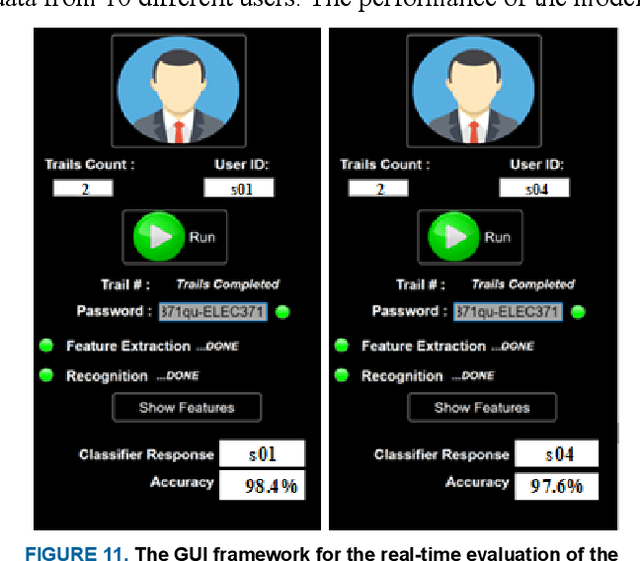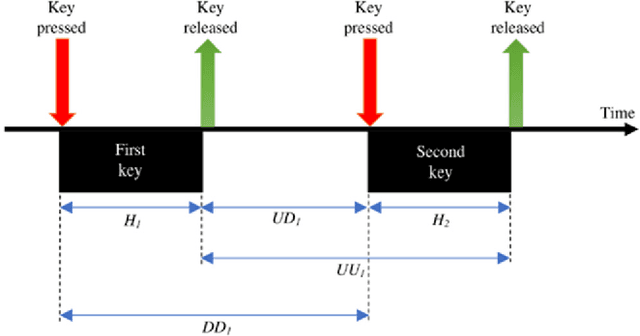Mamun Bin Ibne Reaz
Bangladeshi Native Vehicle Detection in Wild
May 20, 2024



Abstract:The success of autonomous navigation relies on robust and precise vehicle recognition, hindered by the scarcity of region-specific vehicle detection datasets, impeding the development of context-aware systems. To advance terrestrial object detection research, this paper proposes a native vehicle detection dataset for the most commonly appeared vehicle classes in Bangladesh. 17 distinct vehicle classes have been taken into account, with fully annotated 81542 instances of 17326 images. Each image width is set to at least 1280px. The dataset's average vehicle bounding box-to-image ratio is 4.7036. This Bangladesh Native Vehicle Dataset (BNVD) has accounted for several geographical, illumination, variety of vehicle sizes, and orientations to be more robust on surprised scenarios. In the context of examining the BNVD dataset, this work provides a thorough assessment with four successive You Only Look Once (YOLO) models, namely YOLO v5, v6, v7, and v8. These dataset's effectiveness is methodically evaluated and contrasted with other vehicle datasets already in use. The BNVD dataset exhibits mean average precision(mAP) at 50% intersection over union (IoU) is 0.848 corresponding precision and recall values of 0.841 and 0.774. The research findings indicate a mAP of 0.643 at an IoU range of 0.5 to 0.95. The experiments show that the BNVD dataset serves as a reliable representation of vehicle distribution and presents considerable complexities.
Evaluating Performance of Machine Learning Models for Diabetic Sensorimotor Polyneuropathy Severity Classification using Biomechanical Signals during Gait
May 21, 2022



Abstract:Diabetic sensorimotor polyneuropathy (DSPN) is one of the prevalent forms of neuropathy affected by diabetic patients that involves alterations in biomechanical changes in human gait. In literature, for the last 50 years, researchers are trying to observe the biomechanical changes due to DSPN by studying muscle electromyography (EMG), and ground reaction forces (GRF). However, the literature is contradictory. In such a scenario, we are proposing to use Machine learning techniques to identify DSPN patients by using EMG, and GRF data. We have collected a dataset consists of three lower limb muscles EMG (tibialis anterior (TA), vastus lateralis (VL), gastrocnemius medialis (GM) and 3-dimensional GRF components (GRFx, GRFy, and GRFz). Raw EMG and GRF signals were preprocessed, and a newly proposed feature extraction technique scheme from literature was applied to extract the best features from the signals. The extracted feature list was ranked using Relief feature ranking techniques, and highly correlated features were removed. We have trained different ML models to find out the best-performing model and optimized that model. We trained the optimized ML models for different combinations of muscles and GRF components features, and the performance matrix was evaluated. This study has found ensemble classifier model was performing in identifying DSPN Severity, and we optimized it before training. For EMG analysis, we have found the best accuracy of 92.89% using the Top 14 features for features from GL, VL and TA muscles combined. In the GRF analysis, the model showed 94.78% accuracy by using the Top 15 features for the feature combinations extracted from GRFx, GRFy and GRFz signals. The performance of ML-based DSPN severity classification models, improved significantly, indicating their reliability in DSPN severity classification, for biomechanical data.
Motion Artifacts Correction from Single-Channel EEG and fNIRS Signals using Novel Wavelet Packet Decomposition in Combination with Canonical Correlation Analysis
Apr 09, 2022



Abstract:The electroencephalogram (EEG) and functional near-infrared spectroscopy (fNIRS) signals, highly non-stationary in nature, greatly suffers from motion artifacts while recorded using wearable sensors. This paper proposes two robust methods: i) Wavelet packet decomposition (WPD), and ii) WPD in combination with canonical correlation analysis (WPD-CCA), for motion artifact correction from single-channel EEG and fNIRS signals. The efficacy of these proposed techniques is tested using a benchmark dataset and the performance of the proposed methods is measured using two well-established performance matrices: i) Difference in the signal to noise ratio ({\Delta}SNR) and ii) Percentage reduction in motion artifacts ({\eta}). The proposed WPD-based single-stage motion artifacts correction technique produces the highest average {\Delta}SNR (29.44 dB) when db2 wavelet packet is incorporated whereas the greatest average {\eta} (53.48%) is obtained using db1 wavelet packet for all the available 23 EEG recordings. Our proposed two-stage motion artifacts correction technique i.e. the WPD-CCA method utilizing db1 wavelet packet has shown the best denoising performance producing an average {\Delta}SNR and {\eta} values of 30.76 dB and 59.51%, respectively for all the EEG recordings. On the other hand, the two-stage motion artifacts removal technique i.e. WPD-CCA has produced the best average {\Delta}SNR (16.55 dB, utilizing db1 wavelet packet) and largest average {\eta} (41.40%, using fk8 wavelet packet). The highest average {\Delta}SNR and {\eta} using single-stage artifacts removal techniques (WPD) are found as 16.11 dB and 26.40%, respectively for all the fNIRS signals using fk4 wavelet packet. In both EEG and fNIRS modalities, the percentage reduction in motion artifacts increases by 11.28% and 56.82%, respectively when two-stage WPD-CCA techniques are employed.
Myoelectric Pattern Recognition Performance Enhancement Using Nonlinear Features
Mar 28, 2022



Abstract:The multichannel electrode array used for electromyogram (EMG) pattern recognition provides good performance, but it has a high cost, is computationally expensive, and is inconvenient to wear. Therefore, researchers try to use as few channels as possible while maintaining improved pattern recognition performance. However, minimizing the number of channels affects the performance due to the least separable margin among the movements possessing weak signal strengths. To meet these challenges, two time-domain features based on nonlinear scaling, the log of the mean absolute value (LMAV) and the nonlinear scaled value (NSV), are proposed. In this study, we validate the proposed features on two datasets, existing four feature extraction methods, variable window size and various signal to noise ratios (SNR). In addition, we also propose a feature extraction method where the LMAV and NSV are grouped with the existing 11 time-domain features. The proposed feature extraction method enhances accuracy, sensitivity, specificity, precision, and F1 score by 1.00%, 5.01%, 0.55%, 4.71%, and 5.06% for dataset 1, and 1.18%, 5.90%, 0.66%, 5.63%, and 6.04% for dataset 2, respectively. Therefore, the experimental results strongly suggest the proposed feature extraction method, for taking a step forward with regard to improved myoelectric pattern recognition performance.
A Machine Learning Model for Early Detection of Diabetic Foot using Thermogram Images
Jun 27, 2021



Abstract:Diabetes foot ulceration (DFU) and amputation are a cause of significant morbidity. The prevention of DFU may be achieved by the identification of patients at risk of DFU and the institution of preventative measures through education and offloading. Several studies have reported that thermogram images may help to detect an increase in plantar temperature prior to DFU. However, the distribution of plantar temperature may be heterogeneous, making it difficult to quantify and utilize to predict outcomes. We have compared a machine learning-based scoring technique with feature selection and optimization techniques and learning classifiers to several state-of-the-art Convolutional Neural Networks (CNNs) on foot thermogram images and propose a robust solution to identify the diabetic foot. A comparatively shallow CNN model, MobilenetV2 achieved an F1 score of ~95% for a two-feet thermogram image-based classification and the AdaBoost Classifier used 10 features and achieved an F1 score of 97 %. A comparison of the inference time for the best-performing networks confirmed that the proposed algorithm can be deployed as a smartphone application to allow the user to monitor the progression of the DFU in a home setting.
Multimodal EEG and Keystroke Dynamics Based Biometric System Using Machine Learning Algorithms
Mar 10, 2021



Abstract:With the rapid advancement of technology, different biometric user authentication, and identification systems are emerging. Traditional biometric systems like face, fingerprint, and iris recognition, keystroke dynamics, etc. are prone to cyber-attacks and suffer from different disadvantages. Electroencephalography (EEG) based authentication has shown promise in overcoming these limitations. However, EEG-based authentication is less accurate due to signal variability at different psychological and physiological conditions. On the other hand, keystroke dynamics-based identification offers high accuracy but suffers from different spoofing attacks. To overcome these challenges, we propose a novel multimodal biometric system combining EEG and keystroke dynamics. Firstly, a dataset was created by acquiring both keystroke dynamics and EEG signals from 10 users with 500 trials per user at 10 different sessions. Different statistical, time, and frequency domain features were extracted and ranked from the EEG signals and key features were extracted from the keystroke dynamics. Different classifiers were trained, validated, and tested for both individual and combined modalities for two different classification strategies - personalized and generalized. Results show that very high accuracy can be achieved both in generalized and personalized cases for the combination of EEG and keystroke dynamics. The identification and authentication accuracies were found to be 99.80% and 99.68% for Extreme Gradient Boosting (XGBoost) and Random Forest classifiers, respectively which outperform the individual modalities with a significant margin (around 5 percent). We also developed a binary template matching-based algorithm, which gives 93.64% accuracy 6X faster. The proposed method is secured and reliable for any kind of biometric authentication.
Estimating Blood Pressure from Photoplethysmogram Signal and Demographic Features using Machine Learning Techniques
May 07, 2020Abstract:Hypertension is a potentially unsafe health ailment, which can be indicated directly from the Blood pressure (BP). Hypertension always leads to other health complications. Continuous monitoring of BP is very important; however, cuff-based BP measurements are discrete and uncomfortable to the user. To address this need, a cuff-less, continuous and a non-invasive BP measurement system is proposed using Photoplethysmogram (PPG) signal and demographic features using machine learning (ML) algorithms. PPG signals were acquired from 219 subjects, which undergo pre-processing and feature extraction steps. Time, frequency and time-frequency domain features were extracted from the PPG and their derivative signals. Feature selection techniques were used to reduce the computational complexity and to decrease the chance of over-fitting the ML algorithms. The features were then used to train and evaluate ML algorithms. The best regression models were selected for Systolic BP (SBP) and Diastolic BP (DBP) estimation individually. Gaussian Process Regression (GPR) along with ReliefF feature selection algorithm outperforms other algorithms in estimating SBP and DBP with a root-mean-square error (RMSE) of 6.74 and 3.59 respectively. This ML model can be implemented in hardware systems to continuously monitor BP and avoid any critical health conditions due to sudden changes.
Can AI help in screening Viral and COVID-19 pneumonia?
Apr 28, 2020

Abstract:Coronavirus disease (COVID-19) is a pandemic disease, which has already infected around 3 million people and caused fatalities of above 200 thousand. The aim of this paper is to automatically detect COVID-19 pneumonia patients using digital x-ray images while maximizing the accuracy in detection using image pre-processing and deep-learning techniques. A public database was created by the authors using three public databases and by collecting images from recently published articles. The database contains a mixture of 190 COVID-19, 1345 viral pneumonia, and 1341 normal chest x-ray images. An image augmented training set was created with around 2600 images of each category for training and validating four different pre-trained deep Convolutional Neural Networks (CNNs). These networks were tested for the classification of two different schemes (normal and COVID-19 pneumonia; normal, viral and COVID-19 pneumonia). The classification accuracy, sensitivity, specificity and precision for both the schemes were 98.3%, 96.7%, 100%, 100% and 98.3%, 96.7%, 99%, 100%, respectively. The high accuracy of this computer-aided diagnostic tool can significantly improve the speed and accuracy of diagnosing cases with COVID-19. This would be highly useful in this pandemic where disease burden and need for preventive measures are at odds with available resources.
 Add to Chrome
Add to Chrome Add to Firefox
Add to Firefox Add to Edge
Add to Edge